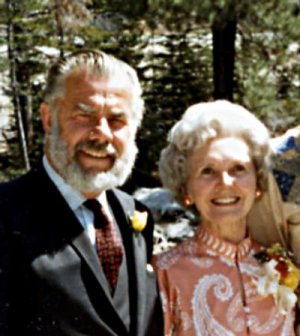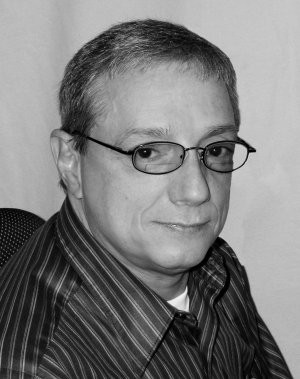LAKE COUNTY – As the wave of home foreclosures continues to climb across the state and the nation, new numbers suggest a steady increase of foreclosures also is occurring here in Lake County.
A report from DataQuick Information Systems of La Jolla, a company that tracks foreclosure rates statewide, found that lenders sent California homeowners the highest number of mortgage default notices in over a decade in this year's second quarter.
Those high default numbers are the result of flat or falling prices, anemic sales and a market struggling with the excesses of the 2004-2005 home buying frenzy, according to DataQuick.
Lenders filed 53,943 Notices of Default (NoDs) during the April-through-June period, DataQuick reported, up 15.4 percent from 46,760 for the previous quarter, and up 158 percent from 20,909 for second-quarter 2006.
The second quarter's default level was the highest since 54,045 NoDs were recorded statewide in fourth-quarter 1996, according to DataQuick. Defaults peaked in first-quarter 1996 at 61,541. A low of 12,417 was reached in third-quarter 2004.
Trustees Deeds recorded, or the actual loss of a home to foreclosure, totaled 17,408 during the second quarter, the highest number in DataQuick’s statistics, which go back to 1988. That was up 57.8 percent from 11,032 for the previous quarter, and up 799.2 percent from 1,936 for last year’s second quarter.
The prior peak of foreclosure sales was 15,418 in third-quarter 1996, the low was 637 in the second quarter of 2005, according to DataQuick.
DataQuick reported that most of the loans that went into default last quarter were originated between July 2005 and August 2006. The median age was 16 months. Loan originations peaked in August 2005. The use of adjustable-rate mortgages for primary purchase home loans peaked at 77.8 percent in May 2005 and has since fallen.
On primary mortgages statewide, homeowners were a median five months behind on their payments when the lender started the default process. The borrowers owed a median $11,126 on a median $342,000 mortgage.
On Notices of Default, the county with the highest percentage increase statewide was Yuba with a 280-percent increase; the lowest was Kings with a 50-percent rise.
For trustee deeds, the high number belonged to Yolo County, which skyrocketed 10,200 percent. Santa Cruz's trustee deeds climbed 253.8 percent in comparison, the lowest number reported in the state.
Lake County's foreclosure rates below state average
DataQuick spokesman Andrew LePage said Lake County's numbers are higher than recent years, but they're still below the staggering state average. And the most recent numbers also indicate a slight dip from the previous quarter.
In the first quarter of 2006, there were 51 Notices of Default in Lake County, said LePage. A year later, 97 Notices of Default were recorded in the first quarter of 2007, a 90.2-percent increase, LePage said.
In 2006's second quarter, there were 58 Notices of Default, compared to 2007's 109, an 87.9-percent increase over the year to date but down 3 percent from the first quarter of the year, said LePage.
As for trustee deeds, where the foreclosure process is completed and a home is taken away, there were seven in the first quarter of 2006 versus 31 in 2007's first quarter, LePage said, a 342.9-percent increase.
In the second quarter of 2006, there were 11 trustee deeds; in second quarter 2007, there were 48, a 336.4-percent jump but, again, down slightly – about 6 percent – from the previous quarter.
Neighboring counties recorded the following numbers for the second quarter, with percent increases indicating the rise from the same quarter the previous year:
Notices of default – Sonoma, 462, 128.7 percent increase; Napa, 128, 172.3 percent increase; Yolo, 232, 201.3 percent increase.
Recorded Trustee Deeds – Sonoma, 163, 805.6 percent increase; Napa, 34, 1033.3 percent increase; Yolo, 103, 10,200 percent increase.
“The key thing to watch is if things will level out in the next few quarters,” said LaPage.
If it doesn't level off, it means the problems are deeper than just peak lending activity to late summer 2005, he added.
Recent foreclosure activity “probably has more to with bad lending and borrowing decisions,” said LePage.
Many of the lending practices pointed to as likely causes for the climbing foreclosure rates – teaser and adjustable rates, and interest-only loans – were not new, LePage said.
If here was anything that was new, said LePage, it was how widely those loans were used.
Home sales don't appear heavily influenced
Thomas Pelandini, the Lake County Association of Realtors president for 2007 and operations manager for CPS Country Air Properties, said the local real estate market is fluctuating, but those changes don't appear linked with foreclosure activity.
The California Association of Realtors' most recent report on home sales stated that sales in June decreased by 24.7 percent compared with June 2006 while, at the same time, the median price of existing homes increased 3.2 percent. The association reports that the focus on foreclosures is causing some homebuyers to take a “wait-and-see” attitude, while homes priced to sell continue to move.
The same is true in Lake County, said Pelandini. “Pricing seems to be the critical element.”
Looking at residential statistics countywide from January through July of 2006, Pelandini said there were 550 listings sold with a median price of $299,000.
During the same period this year, the number of listings sold was 472, a 10-percent decrease, said Pelandini. The median price for the homes sold was $275,000, a 9-percent drop, he said.
“It seems to be fluctuating month to month,” Pelandini said. “There's no consistent upward trend or downward trend.”
The market is expected to enjoy a rebound in 2008 and 2009, Pelandini said.
Historically Lake County hasn't had a major foreclosures problem, said Pelandini.
As for current activity, “There are foreclosures here, and most agents have done a pretty quick cram course on short sales,” he said.
In recent years, with an influx of homebuyers coming to the county to look for second or retirement residences, the buyers tend to have higher incomes and more secure financial footings, which help avert foreclosure activities, Pelandini explained.
E-mail Elizabeth Larson at This email address is being protected from spambots. You need JavaScript enabled to view it..
{mos_sb_discuss:2}









